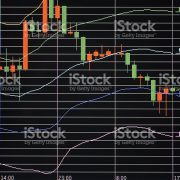Have Currency Markets Become More Choppy Recently?
- Published: 24/08/2016
- |

One straightforward way to look at the level of mean-reversion (‘side-wayness’ as opposed to ‘trendiness’) in an asset over a given period is to look at the so-called Vertical Horizontal Filter (VHF). In essence, this measure computes the difference between the highest and lowest level in the asset price and divides this by how many ‘steps’ it took on the path to get there. The VHF measure was developed in the early 1990s and a low measure would indicate a choppy market, whereas a high measure would indicate a trending phase. In terms of our own preferred definition, mathematically it is : VHF = (Max({Spot in 250 days}) – Min({Spot in 250 days})) / (SUM_{t=2}^{250} (Spot(t) – Spot(t-1))). In other words, the numerator is the absolute value of the highest close minus the lowest close over the course of a year. The denominator is the sum of the absolute value of the difference between each day’s price and the previous day’s price over this same year.
Below we show the VHF measure for the most liquid currency relationship, namely, the EURUSD cross. The chart shows that we have been in a mean reversion period for most of this year, with effectively this pair trapped in the 1.05 to 1.15 range. Why so? We argue that the Fed backtracking over the trimming of their second rate rise this year has had an impact in dampening further prospects for US Dollar appreciation. At the same time, although the Eurozone has engaged in an expanded QE programme, inflation remains low, and so real interest rate differentials between Europe and the US are not large. The market is now, we believe, pricing in new normal or “neutral” real interest rate (1%) that is much lower than in the past (2%-3%) and this is reflected in flat forward curves in interest rates. This applies to both currency blocks. What do we need for this mean reversion to stop and a new equilibrium to be found? We believe that real rate expectations need to be dislodged from their current static equilibrium and, if so, most currency pairs, including EURUSD will find new equilibrium levels as real interest rate differentials act as drivers of spot rates going forward, something that has been driving Emerging Market currencies of late in fact.
